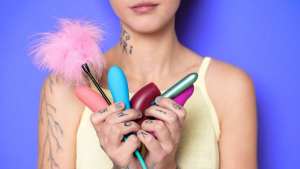Ad compliance for adult toys is one of the biggest challenges adult brands face when trying to advertise online. Platforms like Meta (Facebook & Instagram) and Google have strict policies on adult content, making it easy to get your ad disapproved — or worse, have your account banned.
In this guide, we’ll show you how to advertise adult products effectively and stay compliant across major platforms. Whether you’re running Meta ads, exploring Google Shopping, or using alternative ad networks, the right approach can help you scale without violating ad policies.

1. Meta Ads and Ad Compliance for Adult Toys
Meta’s policies around adult content are among the strictest. Any hint of explicitness—whether visual or verbal—can lead to a rejected ad or a suspended account.
What’s NOT Allowed?
-
Nudity or sexually explicit imagery
-
Suggestive product descriptions
-
References to sexual pleasure or enhancement
-
Close-up images of adult toys
What Is Allowed (With Care):
-
Wellness-focused messaging: Reframe the product as a tool for personal care, intimacy, or relationship improvement.
-
Abstract visuals: Use images of packaging, soft textures, or neutral settings rather than showing the product itself.
-
Educational hooks: Promote blog content like “How to Enhance Your Intimacy” rather than directly advertising a toy.
Bonus Tip:
Use click-through funnels. Start with an educational blog post or guide, and then direct engaged users to product pages via email or retargeting.
2. Google Ads Ad Compliance for Adult Toys
Google does allow adult product advertising, but only under strict content policies and targeting rules.
How to Stay Compliant:
-
Use non-explicit keywords like “wellness tools,” “self-care devices,” or “relationship aids.”
-
Optimize your Shopping Feed: Ensure titles, descriptions, and images meet adult content guidelines and avoid sexually suggestive elements.
-
Avoid using retargeting lists that include minors or general audiences.
 SEO Tip:
SEO Tip:
Because Google may limit your ad reach, invest in organic SEO. Rank blog posts for high-intent keywords like:
-
“Best intimacy tools for couples”
-
“How to discreetly buy adult wellness products”
-
“Non-explicit adult toys for beginners”
Organic traffic builds long-term visibility without the compliance risks tied to paid ads.
3. Alternative Advertising Platforms
If Meta and Google are too limiting, explore alternative networks that are more adult-friendly.
Top Alternative Platforms:
-
Reddit Ads – Offers more freedom, especially in wellness and NSFW communities.
-
Native Ad Platforms – Taboola, Outbrain, and similar networks allow you to promote blog-style content with softer messaging.
-
Programmatic DSPs – Some demand-side platforms (DSPs) specialize in adult-friendly placements, often allowing direct product ads on appropriate websites.
By diversifying your ad spend across these platforms, you reduce reliance on policy-heavy ecosystems like Meta.
4. Best Practices to Avoid Getting Banned
Even if you’re on a compliant platform, there are universal tactics that reduce your risk and improve campaign performance.
Proven Strategies:
-
Indirect funnels work best – Use top-of-funnel content (blogs, guides, tips) to engage users and lead them to your store over time.
-
Influencer & affiliate partnerships – Collaborate with creators in the wellness space. Their content often isn’t restricted the way ads are.
-
A/B test relentlessly – Try variations in copy, CTA, and visuals to find what gets approved and performs well.
-
Keep your brand voice clean – Avoid slang, adult humor, or anything that might be interpreted as sexual innuendo.
Staying conservative with copy and creative during ad testing phases can save you from getting flagged too early.
 Conclusion
Conclusion
Ad compliance for adult toys may seem like a barrier, but with the right strategy, it’s an opportunity to stand out. By reframing your messaging, focusing on education, leveraging SEO, and tapping into alternative ad platforms, you can grow your brand — without breaking any rules.
Stay up to date with platform policies, test your messaging often, and most importantly, don’t rely on one channel alone. Success in this space comes from consistency, creativity, and compliance.



